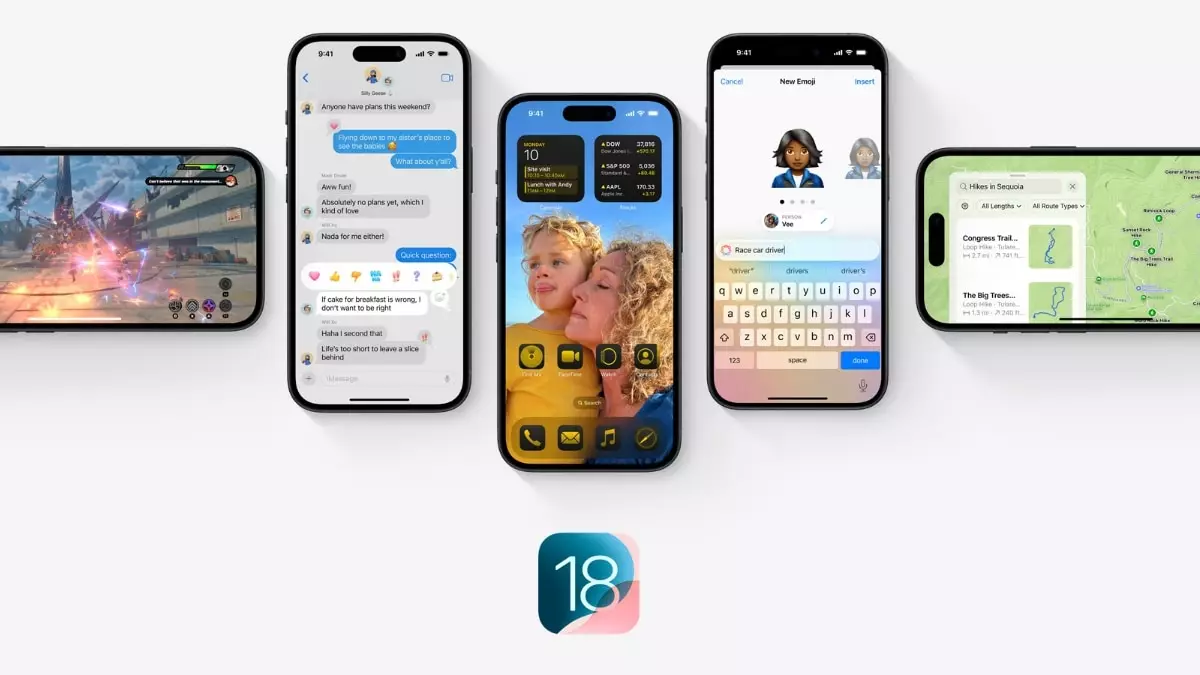Apple’s recent unveiling of the iPhone 16 lineup marks yet another milestone in its storied history of technological advancement and innovation. The launch event, aptly named “It’s Glowtime,” was held on September 9 and introduced not just one, but four distinct models: the iPhone 16, iPhone 16 Plus, iPhone 16 Pro, and the flagship iPhone 16 Pro Max. This article will delve deep into the features, software update, and overall consumer impact of this latest smartphone release.
Big Changes Under the Hood
What sets the iPhone 16 series apart from its predecessors goes beyond just hardware. Each model will be equipped with Apple’s latest operating system—iOS 18—right out of the box, which will become available for broader public use on September 20. However, customers using older iPhone models won’t have to wait long; iOS 18 will be accessible for upgrade on these devices from September 16. This strategy reflects Apple’s commitment to maintaining a connection with its established customer base, allowing them to experience the newest mobile OS functionalities ahead of new device owners.
The catch? While every iPhone 16 will capitalize on the efficiencies of iOS 18, some of its more advanced features will only be accessible to the latest Pro models. The much-hyped Apple Intelligence—incorporating generative AI capabilities and a redesigned Siri—will not be available until a subsequent update, leaving users with a tantalizing taste of what is to come.
iOS 18 promises significant advancements in customization, allowing users to fine-tune their interactions with their devices. The operating system is designed to provide users with a new level of control over their home screen. Users will now be able to rearrange apps and widgets at will, adjusting not only their positions but also their aesthetics. This includes options to change icon colors, match them with wallpaper, and resize widgets for a more personalized feel.
The Control Center, a core part of the iOS experience, has also undergone a significant revamp. With a simple downward swipe from the home screen, users can now access more controls, further consolidating functionality in a single, user-friendly interface. This redesign aims to enhance user convenience, reflecting a broader trend where user experience is prioritized.
Enhanced Messaging and Multimedia Experience
The updates aren’t limited to the aesthetic. Apple continues to evolve its communication platforms with several enhancements to the Messages app, making messaging more dynamic and engaging. Users will now be able to add animated effects to their messages, including emojis, which adds a new layer of expressiveness to digital communication. Moreover, the integration of Rich Communication Services (RCS) allows seamless messaging across platforms, bridging gaps that have long existed in cross-device communication.
The Photos app has also been redesigned, focusing on categorization and quick retrieval of media. As storing memories transforms into a digital endeavor, Apple is striving to make photo organization intuitive and efficient. With these enhancements, users can locate cherished moments quickly, even in an atmosphere where they may be overwhelmed by digital clutter.
Amid the push for additional functionality and customization, Apple has also been attentive to user privacy—an increasing concern in today’s digital world. As part of the iOS 18 roll-out, users will gain the capability to lock or hide sensitive applications directly from the home screen. This feature is particularly important as mobile devices often store essential personal information, and safeguarding this data is imperative in maintaining user trust.
Conclusion: A Step Towards the Future
The iPhone 16 lineup is not just another iteration of a smartphone; it represents a melding of technology, personalization, and user-centric design. As technology continues to evolve, Apple’s offerings in the iPhone 16 and iOS 18 illustrate a thorough understanding of consumer needs and preferences. By blending innovative features with enhanced privacy controls and a focus on user experience, Apple is poised to maintain its competitive edge in an ever-quickening mobile landscape. As consumers await the rollout of iOS 18 and the full capabilities of the iPhone 16 series, the anticipation is palpable—marking another exciting chapter for Apple aficionados worldwide.

Leave a Reply